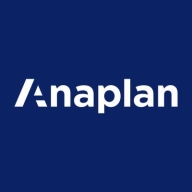

Anaplan and Red Hat Insights operate in the business planning and predictive analytics market. Anaplan generally holds an advantage in features due to its robust planning capabilities, while Red Hat Insights is superior in security management, valuable for IT environments.
Features: Anaplan offers dynamic planning capabilities, enabling businesses to perform scenario planning and forecasting. It provides integration across departments for better decision-making. Anaplan is geared towards financial planning, whereas Red Hat Insights focuses on system performance insights and vulnerability management, with proactive security measures for IT operations and risk management.
Ease of Deployment and Customer Service: Anaplan's cloud-based solution supports quick implementation with customization options and customer support through account managers. Red Hat Insights seamlessly integrates within Red Hat ecosystems for fast deployment for Red Hat Enterprise Linux users, offering solid support for complex IT infrastructure, highlighting differences in targeted audiences during deployment and support services.
Pricing and ROI: Anaplan involves higher initial setup costs but delivers ROI through improved strategic planning efficiency. Red Hat Insights is bundled with Red Hat Enterprise Linux, providing a cost-effective risk management solution, delivering ROI through reduced downtime and improved system reliability. Anaplan's expenses reflect its planning capabilities while Red Hat Insights minimizes hidden costs with comprehensive system oversight.
| Product | Market Share (%) |
|---|---|
| Anaplan | 13.8% |
| Red Hat Insights | 2.5% |
| Other | 83.7% |


| Company Size | Count |
|---|---|
| Small Business | 9 |
| Midsize Enterprise | 5 |
| Large Enterprise | 12 |
| Company Size | Count |
|---|---|
| Small Business | 1 |
| Midsize Enterprise | 1 |
| Large Enterprise | 9 |
Anaplan is a cloud-based planning and performance management platform with documented use cases in finance, sales, supply chain, marketing, IT and HR. At the core of Anaplan's technology is a single hub where business users can build, deploy, maintain, and share models without coding or reliance on IT personnel.
With Anaplan You Can:
The Anaplan Platform Is:
Anaplan Benefits:
Anaplan Features:
Reviews from Real Users:
"Anaplan's in-memory calculation engine is super-fast compared to the old tools we previously used. You enter the data and everything shows up in one go.” - Sandeep A., Lead Analyst at a retailer
"This product has a very good modeling feature, and its graphical representation of visualizations has also been valuable.” - Raghavendra K., Lead Consultant at a tech services company
"Anaplan is a three-dimensional cloud platform that is good for analyzing data, visualization, integration, terrific for visibility.” - Anaplan model builder at a tech services company
Red Hat Insights provides highly scalable, prescriptive analytics across complete, hybrid infrastructures. Delivered as a Software-as-a-Service (SaaS) offering, Red Hat Insights takes advantage of Red Hat’s industry expertise as a leader in open source software to generate tailored remediations in real time. Red Hat Insights uses intelligent data to pinpoint technical risks and help IT resolve problems before business is affected. This modern, integrated platform supports operational analytics and automated resolution across physical, virtual, container, and private and public cloud environments.
We monitor all Predictive Analytics reviews to prevent fraudulent reviews and keep review quality high. We do not post reviews by company employees or direct competitors. We validate each review for authenticity via cross-reference with LinkedIn, and personal follow-up with the reviewer when necessary.